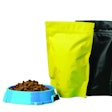Smaller companies can compete effectively by offering specialized products or by serving a local market. These companies, without large financial resources, often use contract manufacturers, and thus have higher production costs. This is one reason big manufacturers have focused for some time on reducing costs, improving margins and revenue.
The allure of low-cost labor
The rise of emerging markets like China provides what multinational manufacturers have been seeking to grow and become more competitive. China's ongoing economic transformation has had a profound impact not only on China but on the world. The market-oriented reforms China has implemented over the past two decades have unleashed individual initiative and entrepreneurship. The result has been the largest reduction of poverty and one of the fastest increases in income levels ever seen. China today is the fourth-largest economy in the world. It has sustained an average economic growth rate of over 9.5% for the past 26 years. In 2005 its $2.26 trillion economy was about 15% the size of the US economy.
The commercial petfood market in China is expected to skyrocket by 60% by 2010 as a new culture of pet ownership sweeps middle and upper income Chinese families. With dog food leading the way, premium categories are the most attractive segments for US petfood exporters. Positive consumer perception, slowly developing brand loyalty and lack of domestic competition make this nascent market a fast-growing niche for imports, but one that is already highly competitive. As such, some petfood manufacturers have opened operations in China to reduce costs, especially labor costs. Nestlé Purina, which recently opened its first petfood processing plant in China, invested some US$10.3 million in a factory located in the Tianjin Economic Technological Development Area.
Artificially low costs
Cost savings associated with opening plants in China have fueled margin growth, but also have highlighted issues of quality. Which raises the question, do larger markets offer better products? The question has implications both for theories of cities and theories of market organization. There is evidence that product quality bears different relationships with market size depending on the process for producing quality.
In some markets where quality is created largely through variable costs, markets fragment as they grow large, and the number of varieties, including levels of quality, increases. Consequently, the number of high-quality products increases as market size increases. This is true of much of the petfood industry.
In other markets where the cost of creating quality is largely fixed with respect to output, markets do not fragment as they grow large, and average product quality decreases with increased market size.
The Chinese market, which is in its infancy, has been pressured by manufacturers that require higher output at cost levels that are kept artificially low. That is changing given the recent quality scares. More stringent controls and the necessary increases in costs to accomplish more appropriate levels of quality will dramatically change the Chinese market.


.png?auto=format%2Ccompress&fit=crop&h=167&q=70&w=250)














